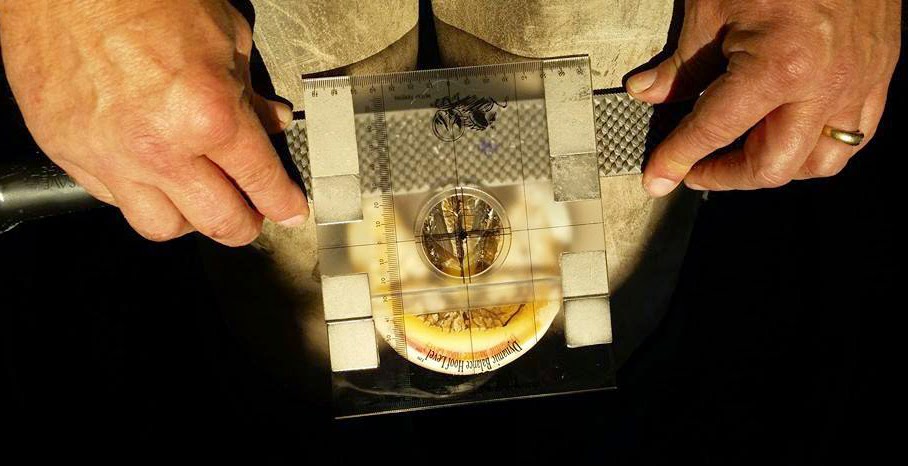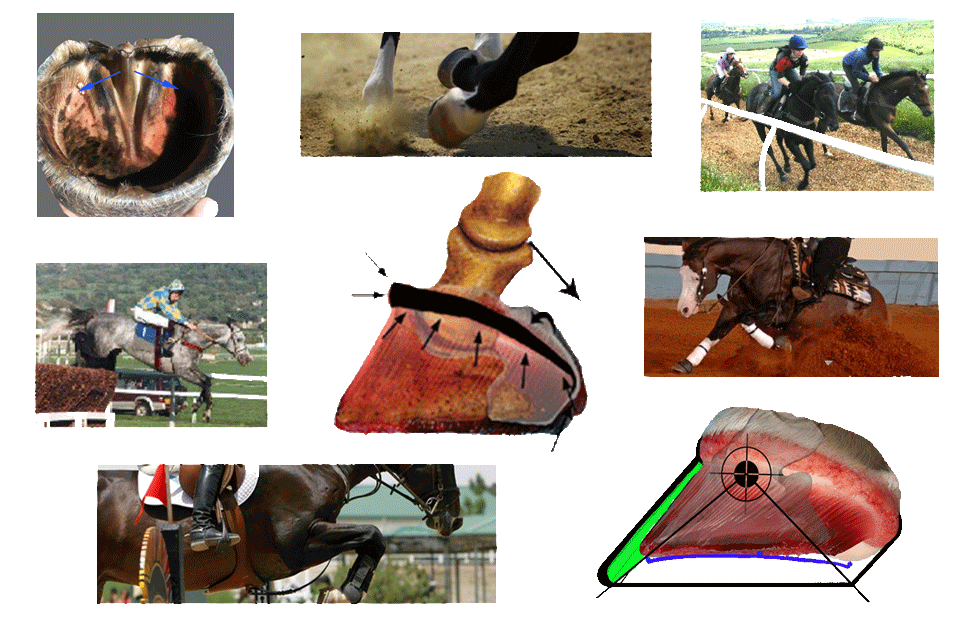At our school and throughout my travels I am often asked, "How do I balance the horse with less than ideal conformation?" The answer is quite simple really, balance the hoof capsule to the internal foot.
I have been teaching students for more than a decade to balance hoof to foot. I have gone so far as to have three or more students on one horse at each course. That's right, four different trimmers on one horse, with the end results being a balanced horse.
I remember doing a clinic for a group of Amish Farriers in Pa. more than ten years ago. There were 29 farriers present. I had four different farriers trimming a draft mare. Each farrier would do one hoof following my direction for achieving balance of hoof to foot. As each farrier trimmed a hoof I noticed a slim guy with a long beard in the back of the group. He was shaking his head side to side and that long beard was swaying back and forth. When I asked him what was on his mind he simply said, I've been shoeing for nearly 50 years and in my opinion there is no way that those hooves are going to match or be balanced. I presented him with a challenge. I said, when those guys are done, you go and measure and check the work over. If you come to me following your inspection and if you feel that any of the hooves are more than an 1/8th of an inch out of balance to one another, I'll pack and leave before sitting down for lunch.
Once the farriers were done, I moved to lecturing on functional anatomy with the rest of the group. Over my shoulder I saw this guy down on his hands and knees with a small tape measure. He measured medial and lateral hoof walls, he picked up each foot and eyed down the limb, and he check the HPA.
In a few minutes I saw him standing at the back of the group and that beard was swaying back and forth again as he shook his head. I figured I was heading to Micky D's for lunch, but when I asked him for his conclusions he offered, "No more than a 1/16th of an inch, lets eat."
There are many methods of trimming that subscribe to balancing the hoof to the foot's axis or COR. Whether you subscribe to theories presented by Mike Salvoldi, Gene Ovnicek, Dave Duckett, or the ever growing population of hoof experts, balancing around the axis of the foot is central to their work. Though all of these methods have merit, they each present a challenge. How do we balance the hoof to foot without a plane of reference? The Dynamic Balance Hoof Level is the first tool to offer a reliable plane of reference, that when followed results in repeatable balance.
Below are photographs of a horse with toe-in conformation that was trimmed at the December Advanced Level Two Applied Equine Podiatry course in Ocala, Florida.
The Advanced Level Course was also host to the first Dynamic Balance Hoof Level Certification Clinic offered by the Institute of Applied Equine Podiatry. The Dynamic Balance Hoof Level presents a reliable plane of reference around the axis of the foot, thus allowing the trimmer to establish balance in all horses, even those with less than ideal conformation. I will be presenting more on the DBHL in future posts, along with an instructional video. The Level will be available for purchase by the end of this month.
 |
| before and after LF |
 |
| before and after RF |
 |
| HPA |






































